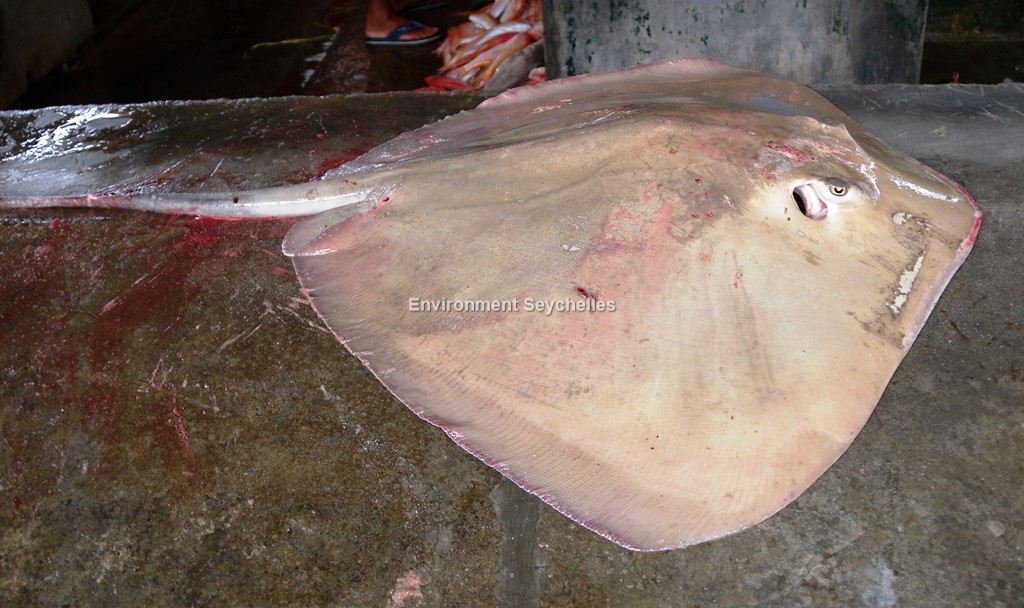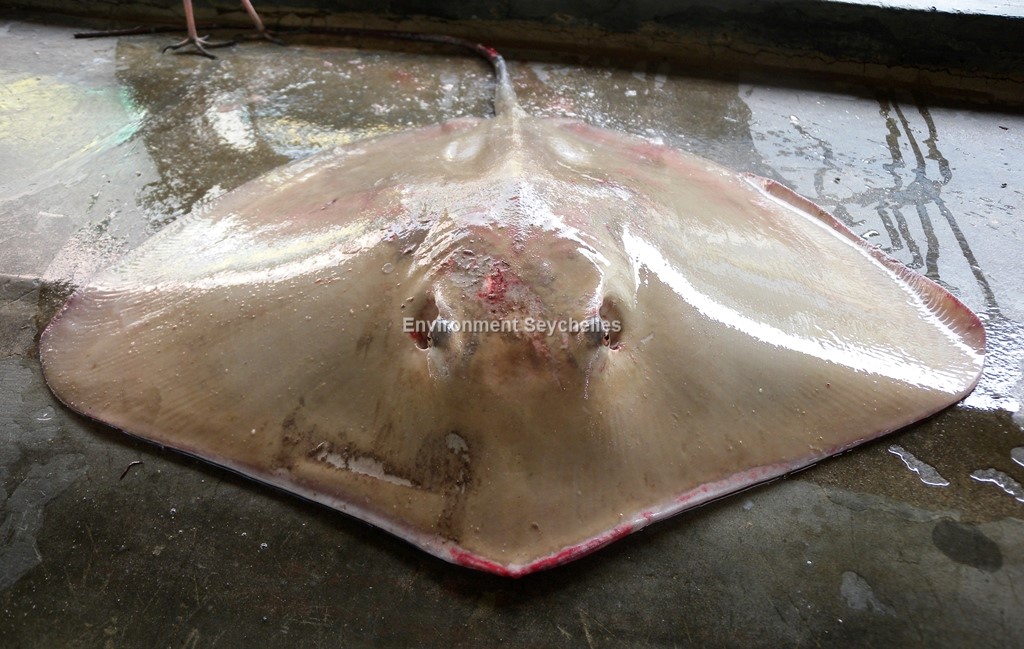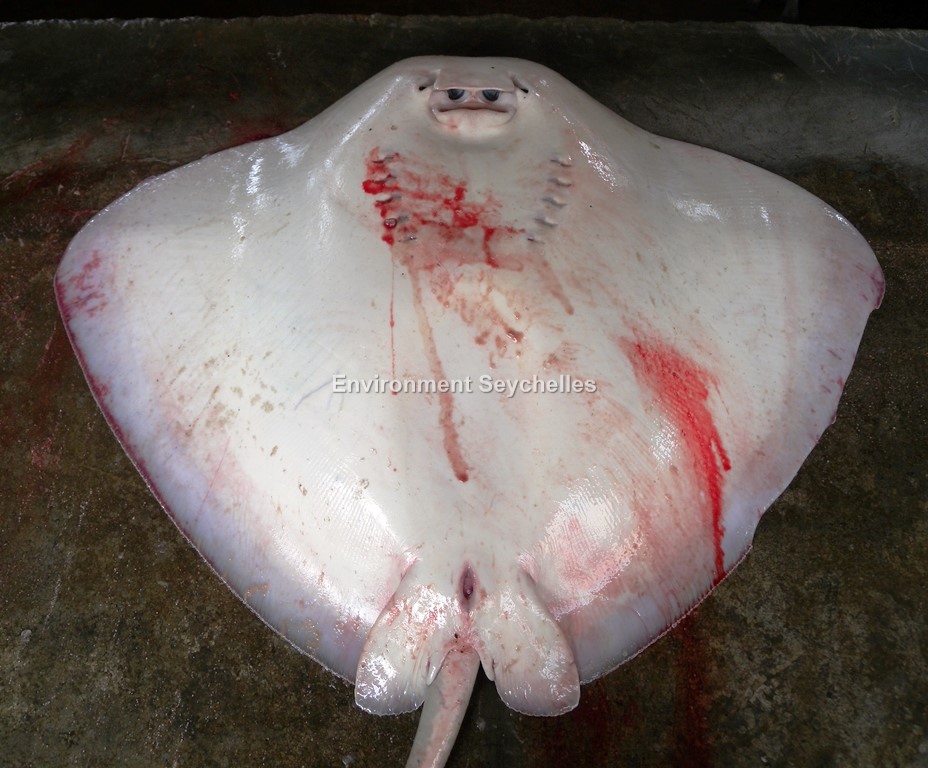Description:
Large plain coloured whipray with a rhombic disc. Dorsal surface light tan brown, ventral surface white. Lacks obvious band of denticles on central disc nor enlarged
thorny denticles on mid-line of disc and tail before caudal sting. Disc broad through trunk, width 1.1-1.2 times length, pectoral fin apex rounded. Snout short, very broad,
with an enlarged triangular apical lobe. Very long narrow tail with caudal sting tail.
Size:
Maturity: males mature at approx. 112cm DW, female size at maturity unknown. Max: attains at least 146 DW exceeding 308 cm TL. max. published weight: 18.5 kg
Habitat and Ecology:
Inhabits lagoon and seaward sand flats from the intertidal to at least 70m depths. Sometimes occurs in large aggregations. Ovoviviparous. Feeds mainly on
small fish, crustaceans and molluscs.
Fishery Status:
This species is not protected or subject to fishery regulations. It is caught in the gill net fishery and may also be harpooned, but is an uncommon component of the catch.
Notes:
Venomous spine on tail can cause painful injury.
References:
Bray, D.J. (2018). Pateobatis fai in Fishes of Australia, accessed 13 Aug 2018, http://fishesofaustralia.net.au/home/species/3528
Froese, R. & D. Pauly. Eds. (2018). FishBase. https://www.fishbase.de/summary/pateobatis-fai (12/08/18).
Last, P.R. et al (2016). Rays of the World. CSIRO Publishing ISBN 9781501705328
Manjaji Matsumoto, B.M. et al (2016). Pateobatis fai. The IUCN Red List 2016: e.T161615A104219816. http://dx.doi.org/10.2305/IUCN.UK.2016-3.RLTS.T161615A104219816.en. (12/03/19).
Citation:
Nevill, J.E.G. (2019). Pateobatis fai, Pink whipray. Seychelles Seatizens. www.seatizens.sc. https://seatizens.sc/species/pateobatis-fai-jordan-seale-1906/ (Edited 29/09/21).




Thanks for the article.Really looking forward to read more. Cool.
Wow, great post.Much thanks again. Want more.
Wow, great blog article. Really Cool.
Thank you for your blog article.Much thanks again. Great.
I really like and appreciate your blog.Really thank you! Fantastic.
I truly appreciate this blog post.Really thank you! Keep writing.
Say, you got a nice blog post.Much thanks again. Keep writing.
I really enjoy the post.Thanks Again. Really Great.
I think this is a real great blog article. Really Cool.
Major thankies for the blog post.Really thank you! Much obliged.
I am so grateful for your post.Much thanks again. Really Cool.
Really informative post.Really thank you! Really Great.
Very informative blog. Keep writing.
A big thank you for your article post.Thanks Again. Will read on…